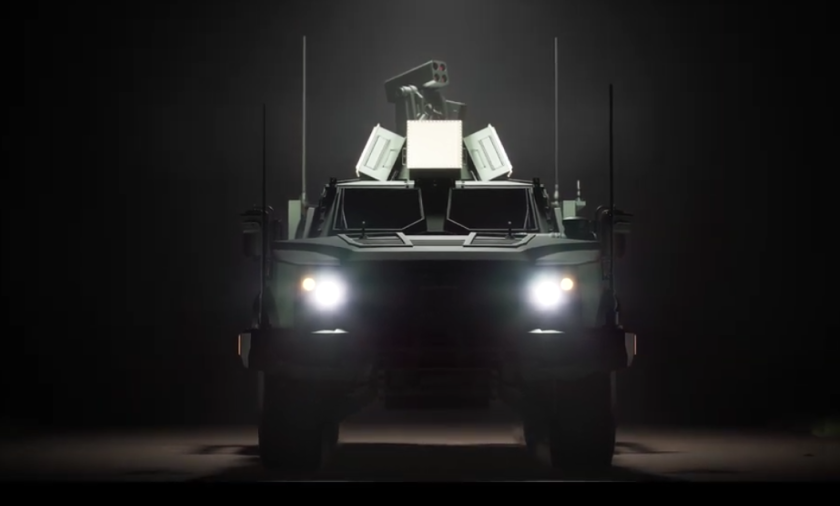Leidos has today announced the launch of AirShield, its latest counter-uncrewed aerial system (C-UAS) technology which will include both kinetic and non-kinetic effectors.
AirShield is a multi-layered system that can operate autonomously in a single location or on the move to provide detection, tracking, classification, identification, prioritisation, assessment, and neutralisation of threats.
“Our Co-axial Unmanned Guided Autonomous Rotorcraft (CUGAR) effector, showcased last year at the MFIX demo, is our current effector,” said Derrick Birdsell, AirShield programme manager for Leidos. “We plan to augment it with the APKWS [Advanced Precision Kill Weapon System] missile system to boost its effectiveness. Additionally, we have the ability to easily integrate with other effectors including high-energy lasers, turret-mounted guns, and even high-powered microwave systems.”
Leidos is also integrating its software into the hardware development of AirShield, employing AI for weapon-to-threat pairing, previously managed by a rule-based algorithm. The company has also placed a high emphasis on cyber resiliency while developing the AirShield system and says future evolutions will integrate both offensive and defensive cyber strategies.
The original C-UAS work for Leidos began under the Defense Advanced Research Projects Agency (DARPA) Mobile Force Protection (MFP) programme. Following last year’s successful demonstration, the programme transitioned to the US Army Combat Capabilities Development Command (DEVCOM) Aviation and Missile Center.
Multiple prototypes of AirShield have been built and demonstrated in live fire exercises, with plans for some to be fielded by US Southern Command in 2025. Additionally, Leidos is building a production line that will begin delivering systems to future customers as early as 2025.
For more information
Image: Leidos




